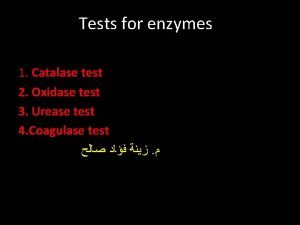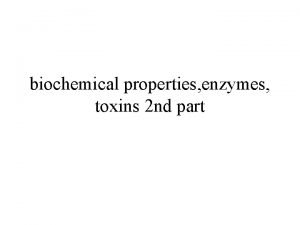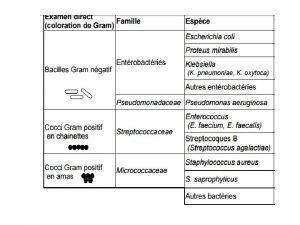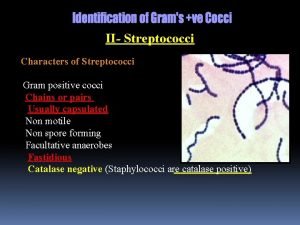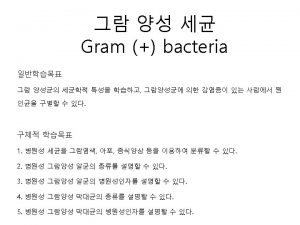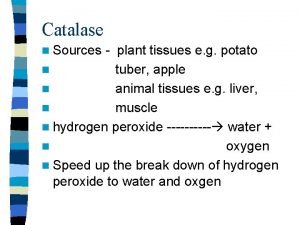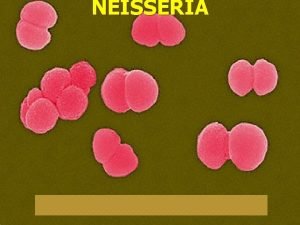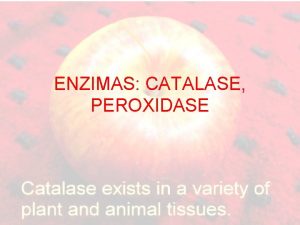History v Catalase was first noticed as a













- Slides: 13


History v Catalase was first noticed as a substance in 1811 when Louis Jacques Thénard, who discovered H 2 O 2 (hydrogen peroxide), suggested that the breakdown of H 2 O 2 is caused by a substance. v In 1900 Oscar Loew was the first to give it the name catalase, and found its presence in many plants and animals. v In 1937 catalase from beef liver was crystallised by James B. Sumner and the molecular weight worked out in 1938.

Introduction Catalase is a common enzyme found in living organisms. • Its functions include catalyzing the decomposition of • hydrogen peroxide to water and oxygen Catalase has one of the highest turnover rates of all • enzymes; one molecule of catalase can convert millions of molecules of hydrogen peroxide to water and oxygen per second Catalase is found in most aerobic and facultative anaerobic bacteria. Catalase is not found in anaerobes.

Cellular Role v Hydrogen peroxide is a harmful by-product of many normal metabolic processes: v To prevent damage, it must be quickly converted into other, less dangerous substances. v To this end, catalase is frequently used by cells to rapidly catalyze the decomposition of hydrogen peroxide into less reactive gaseous oxygen and water molecules.

Molecular mechanism The enzyme Catalase breaks down the waste substance § hydrogen peroxide into water and oxygen. Hydrogen peroxide Catalase (enzyme) oxygen + water

Catalase test v In microbiology, the catalase test is used to differentiate between bacterial species in the lab. v This test is particularly useful in distinguishing staphylococci and micrococc, which are catalase-positive, from streptococci and enterococci, which are catalase-negative.

Catalase positive staphylococci • micrococci •

Catalase negative streptococci • enterococci •

Material

Procedure 1. placing a drop of hydrogen peroxide on a microscope slide. 2. Using an applicator stick, touches the colony and then smears a sample into the hydrogen peroxide drop. 3. If bubbles or froth form, the organism is said to be catalase-positive; if not, the organism is catalase-negative.

Results

Limitations Hydrogen peroxide is unstable and must undergo a quality control check daily before use. Colonies for Catalase testing must be from 18 -24 hour cultures. It is important not to contaminate the bacterial colony under test with blood agar. Red blood cells contain Catalase and their presence will give a false positive result. Old cultures may loose their Catalase activity, possible resulting in a false negative result.

The End
